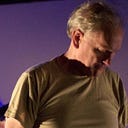How much of remembering is unconscious?
Retrieving a memory is an example of an unconscious process of the brain.
Animal memories, including our own, are primarily associative. This contrasts with categories and keys, which are primary retrieval mechanisms of computers. In each hemisphere, our memories are connected with each other quite directly, with axons connecting groups of neurons in what is called a “small world network” topology.
We don’t know how a memory is encoded in a network of neurons, or the relation between a neuron and a memory, or even how localized a memory is in the brain. We now have reason to believe there are no structural organization of memories that is common among individuals, much less species.
From the requirements of storing information in a largely undifferentiated neural network like we see in human and some animal brains, we can assume some things about how memory works.
- Different sorts of memories are stored in different ways. There seems to be no universal organization of memories. Short term memory is stored completely differently than long term memories. The fusiform face area (FFA) stores facial memory completely different than grid cells store navigational memories. Semantic memories are stored differently than episodic memory. Etc., etc., etc.
- Memories are activated and retrieved all the time as part of trying to understand and predict the world. Every step we take in the world unleashes a torrent of memory activations in an ongoing attempt to predict what might happen to us.
- Our current perception activates memories of events and objects that are related to what we perceive. It does this primarily by simultaneously activating many potential/candidate memories which are likely related, but not necessarily useful.
- Activated memories also activate further memories related to themselves, and this recursive activation continues. In the absence of new perceptions, recursion can continue indefinitely, but it is often suppressed by later activations by other perceptions.
- Whether activated directly by perceptions or indirectly by activated memories, the applicability of activated memories to the current situation is judged, and the most applicable memories are held and acted on, and perhaps activate further memories.
- The memory activations appear to be mediated by the hippocampus, which is near and highly connected to all cortex memory areas.
- All of the above memory activations are happening at the same time. When we see a person, we activate memories about their personality and their clothing (and other things) simultaneously.
- Whether a memory is applicable (see “judging” above) may be handled in the limbic system for survival issues, but in our normal lives the applicability is usually judged by the prefrontal cortex. The difference is that survival judgments usually involve recognizing the crossing of a threshold, while normal cognitive judgments involve comparing alternatives.
The inherently parallel nature of our associative memories means that we can find and retrieve many appropriate memories at the same time.
The highly recursive nature of our parallel memory activations means that they must always be beyond our conscious awareness. We are the millions of small judgments our hippocampus and prefrontal cortex make each second. Our consciousness experiences the result, not the complex process.

